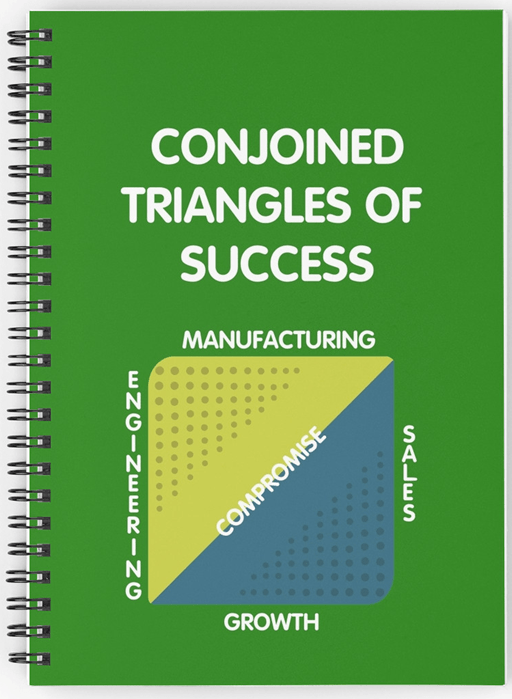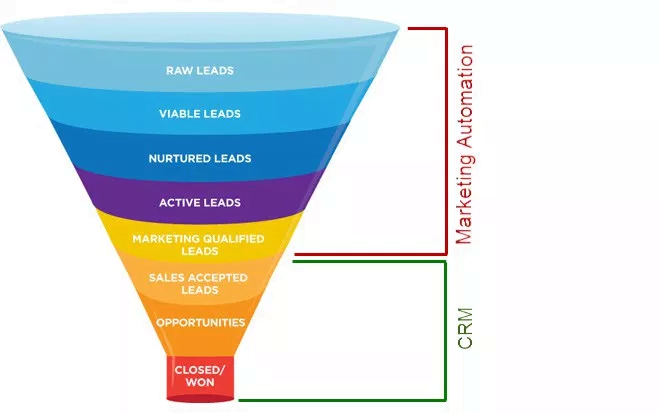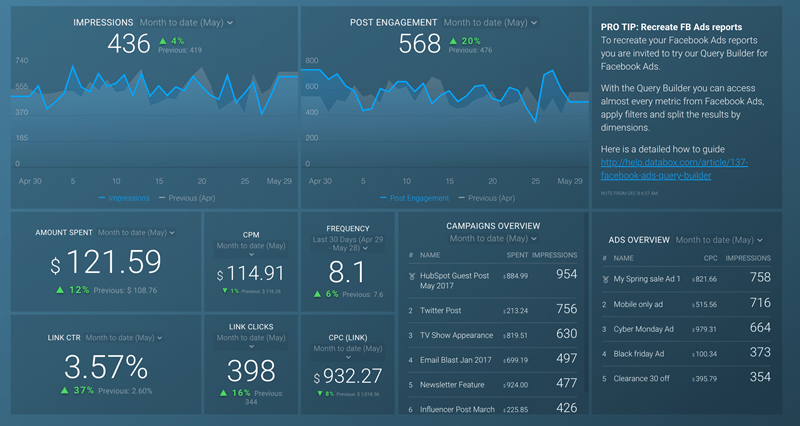
You may make the assumption that taking on a SaaS company as a client would be nearly identical to taking on any other for your PPC agency. But the truth of the matter is that these companies have very specific qualities; if you are unprepared to deal with them, your relationship will be brief.
From lead types to corporate jargon, aggressive goals to scaling at hyperspeed, SaaS companies are unique in many ways (don’t even get me started on all the cooks in the kitchen).
In this blog post, I’ll walk through some of the key nuances of taking on SaaS companies as clients for your PPC agency, and offer some advice on how to collaborate with them properly in order to ensure a lasting relationship (and a healthy monthly retainer).
#1: Dive Deep Into the Client’s Business
On the surface this may seem like a no-brainer, but there’s more to it than the words suggests. When it comes to SaaS companies there are always extra layers to the cake.
If you take on a client who is selling guitars, the search terms, Facebook audiences, and conversions are pretty clear cut. Whether it’s to maintain a competitive edge or provide their users with added value, many SaaS companies target multiple buyer personas and offer products and features that may (or may not) appeal to them all. This makes the process of creating campaigns and audiences for SaaS tricky: you may need to build out specific campaigns and unique landing pages for each audience and value proposition.
There is also the added layer of product and subscription prices, and average customer lifetime value.
If leads are filling the top of the funnel for $100 each and the subscription is $50 per month, then unless you’re closing every deal it’s going to take some time to actually see a positive return on investment – valuable time your agency needs in order to prove its worth.
When you kick off your conversation with a new SaaS client, you need to dig in and ensure you fully understand what their product does. Don’t just go to their website and read a 140 character synopsis; get in there!
SaaS companies tend to have recorded product demos they use for training and QA or would likely love for you to shadow a live one. Most also have dummy software accounts that they can give you access to. If you are going to be responsible for marketing this product you may as well get a look at how the experience will ultimately be for users who convert, right?
This does two things. From a research standpoint, it allows you to become intimately familiar with what your client’s product does and the features that are highlighted during the sales process (which is great for writing ad copy and ad extensions); it also shows that you are willing to go the extra mile, to really understand both product and process. That level of buy-in is invaluable.
More: 11 Mistakes that Keep You From Gaining and Retaining Clients [Free Guide]
#2: MQLs, SQLs, and AQLs, Oh My!
Its paramount to understand how your client scores leads. Doing so will allow you to spread budget more effectively, build targeted remarketing campaigns, and, most importantly, deliver lasting value.
Unfortunately, just like their products, SaaS lead scoring comes in many flavors, and swimming in a sea of acronyms can be incredibly overwhelming: MQL, SQL, AQL, Opps, Wins, LMFAO’s. My head hurts already. Don’t pour a glass of bourbon and bury your head in the sand, though: you need to wrap your head around this stuff.
In fact, I’m willing to go out on a limb and say this is the most important thing to understand when working with SaaS clients.
Let’s say for example, that your AdWords management efforts acquire a lead that’s deemed an “MQL” (marketing qualified lead). On average, an MQL for company x has a 20% conversion rate to an opportunity (sales demo). If volume of opportunities—not MQLs—is the metric that the marketing team’s goals revolve around, then it will give you a significant edge to understand how to improve conversion rates down the funnel instead of squandering time and money focusing exclusively on MQLs.
If you are able to improve conversion rates to opportunities (say you improve Facebook targeting or promotional messaging) this will llow you to make up for a rise in CPA’s to an extent whereas the typical agency model would just be observing health from the surface in AdWords and Facebook, adjusting bids and adding negatives without ever getting under the covers; where they’d be stuck catching minnows, you’re out here shark fishing.
#3: Learn (and Adapt to) the SaaS Sales Process
A gap between marketing and sales exists in all companies. This is a reality that you’ll have to accept right off the bat. However, that gap might be exponentially smaller or larger depending on the company.
The best organized companies have a marketing and sales process that reduces friction as much as possible. Marketing knows what types of leads sales needs and the sales team knows how to use the messaging from marketing material to break the ice and close deals more effectively.
This isn’t always the case.
Often times the imperfect relationship or communication between internal teams means that you can be stuck driving leads that you believed were qualified only to discover that they never yielded any opportunities or sales. This makes you look bad (even though you were doing your job!)
Fortunately, you can avoid this headache by asking yourself a few key questions when you being working with a SaaS client.
Does the company score their leads?
If all leads are created equal once they enter the funnel then it’s really going to cause problems for you.
Going back to my example of MQL’s to Opportunities: if everyone who fills out a form is an MQL then that means sales is ultimately going to be getting a great deal of unqualified leads on their plate. This is going to overshadow the qualified ones and as you increase volume, you are going to have to deal with the kick-back (like being told to shut down something that is working).
All of this can be solved with lead scoring but, because you are an agency, this isn’t your responsibility to implement. That being said, the ability to recognize that lead scoring is necessary and recommending its implementation to your client will have a massive impact on their (and your) success.
Do they have BDR’s?
BDR stands for “business development representative” and similar to the lead scoring process it allows for a cleansing buffer between sales and marketing.
Regardless of whether leads are served on a silver platter, sales reps will find a way to not be 100% satisfied. This is just the nature of the business and the pressure that is on them to perform. A BDR will reach out to and cleanse leads so that once they get to sales they’re in a better position to close.
This is huge for you as an agency because you can get feedback from BDR’s on lead quality before they get to sales and ultimately prevent the knee-jerk reaction of “this just isn’t working for us.”
#4: Understand Why They Aren’t Just Hiring Someone
I’ll be blunt. Before you sign on the dotted line, you need to answer this question: Why is that client looking for an agency to work with?
There could be several reasons, from a lack of experienced members on the team to aggressive targets after an additional round of funding, or maybe they’ve simply got an overworked/understaffed team who don’t want to deal with the management of PPC. There is nothing wrong with any of these reasons. In fact, they represent the perfect opportunity for a seasoned practitioner such as yourself.
However, there are a few reasons a SaaS company might pursue an agency that you need to look out for.
The revolving door
Sometimes the grass really is greener.
Perhaps their previous agency was terrible and didn’t do the job correctly. That’s understandable. That usually isn’t the case when you discover that they have worked with dozens of agencies over the past year.
It’s a red flag when the person or company you are working with is impatient, or unwilling to admit that the inefficiencies are their fault. If their internal process does not set you up to be successful then it isn’t a good situation to get into. Your job should be driving leads and improving quality, not worrying about the demo process or the fact that can’t provide you with the resources (landing pages, pixel implementation, a product that differs from its 14 competitors, etc.) you need.
Internal chaos
Even for an external agency or freelancer, there’s nothing worse than a “toxic work environment.” Although you don’t have to commute to your client’s offices, a team that is falling apart will certainly impact you.
Getting insight into the marketing team’s dynamics is important. How long folks have been there, how many people are on the team, what’s the overall vibe as to how passionate they are about the work that they’re doing?
A jaded, resentful team with high turnover will not be easy to work with.
“Prove to me this works”
Although the prospect of taking on a new client is always exciting and enticing, taking on a client that vaguely understands the value you are delivering is one of the worst decisions you can make.
You shouldn’t have to convince a skeptical client to work with you over the principle that paid advertising actually works. There needs to be a mutual understanding that it does and that you just need to find out what specifically works for them. You want a SaaS client who is obsessed with growth, not fearful of failure or wasting budget.
#5: Learn What’s Worked, What Hasn’t, and Why
Branching off of number four, you need to know the company’s paid advertising history:
If they don’t have any history to sift through, not why, and what has incited their desire to give it a shot now?
If they do, analyze their previous approach(es) to paid advertising. What were the issues? Targeting? Cost? Poor management (of accounts or relationships)?
Use the information gathered from my previous points to build a new strategy for them.
Your knowledge of the product, marketing process, and sales process will come into play here, giving you a leg up and reducing the amount of time it will take you to start driving meaningful results for your new SaaS client.
Your depth of knowledge and attention to detail should impress the client and, if they’ve worked with agencies in the past, it will certainly be a breath of fresh air.
When it comes to working with SaaS companies you want to make them feel as though you are an extension of their team and, as such, are directly invested in hitting their goals.
#6: Integrate Yourself Into the Team
As I just mentioned, SaaS companies tend to place a ton of value in teamwork.
Every company has a team and goals that each team needs to hit; sharing responsibility for achieving those goals holds everyone accountable and often fosters innovative thinking. Venture-backed entities, in particular, usually have extremely aggressive goals; having an agency that is hands-on, in the weeds, and on the frontlines with the employees pays dividends in the long run.
If your agency is located relatively close to the client, I highly suggest visiting their office on a monthly or quarterly basis. Meet with management and members of the team in person. Be more than just a voice on a phone.
This attention to client relationships is so valuable in the long run.
Make the folks at the other end feel like they know you and trust you as a real-life person and not just some faceless agency that they can throw out with the last corporate outing’s lobster shells.
You want them to understand that you are giving it 100%.
#7: Provide Additional Services That Increase Your Value
Most SaaS companies are growing so fast that they are gassed in terms of resources. If your agency provides additional services that you believe the client needs, don’t be afraid to offer a helping hand over time.
The most common issues I see with marketing team bandwidth are:
Design
This is a huge selling point if you are going to be running any display or paid social ads for your client. Many SaaS companies have designers but they are almost always at or over capacity. Offering graphic design work could make your services stickier.
Web Development
These skills are scarce on smaller teams. You will need to be able to implement tracking for all channels so having this as a part of your offering could be huge.
In addition to simple code implementation, your client may be in need of a whole new website or a free tool for lead generation. The latter, in particular, can make your life much easier (especially if you get to have a say in its functionality).
Landing Page Creation
Many companies have limited resources to quickly create and integrate landing pages for new promotions. If you come up with a creative way to spin a promotion for your client, it’s going to be important to have the ability to get those assets created and live quickly. Offering additional services around landing page creation and conversion rate optimization (commonly referred to as CRO) can be a huge competitive advantage when going after and maintaining SaaS clients.
#8: Don’t Be Impeded by Access
In order for you to onboard a new SaaS client as quickly (and painlessly) as possible, it is essential to know what you need access to in order to do your job. This may vary client to client but there tend to be a few constants.
Some of the most common systems you’ll run into are:
- Hubspot: Access is simple and can be “view only.” This access will also be necessary if you want to integrate lead ads through Facebook or check in on landing page performance.
- Marketo: Depending on the client’s need for you to be hands-on, Marketo access may be necessary to create assets and run A/B tests on promotions.
- Salesforce: Access to marketing and sales dashboards within salesforce is key to making decisions; some clients may even have Salesforce integrated into their AdWords account, aligning attribution data and making your life easier.
- Google Analytics: If your client doesn’t have more complex integrations, you may have to make your judgements on goal completes through Google Analytics to tie back revenue to your paid efforts; this is also a great way to build remarketing audiences and uncover new potential keywords and valuable landing pages.
In order for you to get depth and insight into a client’s sales funnel, you are going to need access to the marketing and sales systems outlined above (as well as anything else they use). Having this clarity into the company’s back-end operations is a massive advantage in regards to making decisions at the campaign level by allowing you to identify opportunities and issues.
#9: Enlist the Help of Tools for More Transparent Reporting
Whether you’re using Google sheets, Excel, or a paid service, it’s crucial to have the tools to prove that what you are doing is working.
I personally use Databox and absolutely love it.
There are many tools out there that can connect all of your paid channels but few that have the integration capabilities of Databox:
Databox allows integrations with almost any system that a SaaS company would want insights on. You can connect it to all of your paid channels as well as Hubspot, Salesforce, and other tangentially related systems.
More importantly, it’s extremely easy to build quick and visually impressive dashboards for your clients using templates or by creating your own custom ones (like the one you see above).
#10: Manage Expectations and Establish Reasonable Timelines
We have established how SaaS companies have aggressive goals and a tremendous amount of pressure to hit them. With that being said, it’s going to take some time to get settled in, especially given the complex nature of their business model.
When taking on new SaaS clients, I suggest setting up a 30-, 60-, and 90-day plan for the relationship. This should encompass a walk, jog, run attitude intimating that, after 3 months, the operations should be firing on all cylinders.
Before that point, a plan structured this way conveys your attention to detail and strategy in accomplishing incremental goals without overpromising and failing to deliver. In some cases 3 months may seem too long to your client; if they want you to turn water into wine within a week, they may not be the best fit for you. It’s going to take some time for your strategy to take effect; be transparent about this and you’ll set yourself up for success.
Become a SaaS-tastic Agency
Whether you are already working with SaaS companies or are apprehensive about taking them on as clients, the 10 points above should provide the general road map for what to expect and how properly onboard them. You may decide that it’s not worth the effort and you want to stick to clients selling fidget spinners. That’s totally respectable.
If, however, you’re prepared for the challenge of a lifetime (and you put my advice to use), servicing SaaS clients will quickly become something you relish.
















